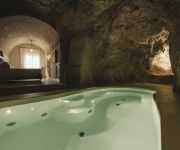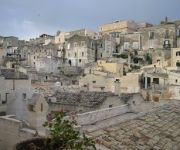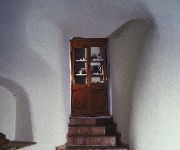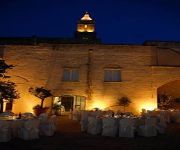Facts and Data
Webpages:
Official Unesco Page
Comune di Matera (only in Italian)
Basis Data:
Unesco World heritage since: 1993
Size of heritage: 1,016 ha
- Buffer zone: 4,365 ha
Coordinates:
Longitude: 16,610°
Latitude: 40,666°
Summary
This is the most outstanding, intact example of a troglodyte settlement in the Mediterranean region, perfectly adapted to its terrain and ecosystem. The first inhabited zone dates from the Palaeolithic, while later settlements illustrate a number of significant stages in human history. Matera is in the southern region of Basilicata.
Location on Map
Show bigger map on Openstreetmap
The Sassi and the Park of the Rupestrian Churches of Matera
The Sassi and the Park of the Rupestrian Churches of Matera, located in the City and Province of Matera, in the Region of Basilicata, Italy, is a UNESCO World Heritage site that showcases a unique and ancient settlement. This site is renowned for its exceptional urban and architectural characteristics, as well as its historical and cultural significance.
History
The history of Matera dates back thousands of years, with evidence of human habitation in the area since the Paleolithic era. The Sassi, which means "stones" in Italian, refers to the ancient cave dwellings that were carved into the soft tufa rock of the region. These dwellings were inhabited continuously from prehistoric times until the 1950s.
Over the centuries, the Sassi developed into a complex network of houses, churches, and monasteries, creating a unique urban landscape. The inhabitants of Matera lived in these cave dwellings, known as "sassi," due to their ability to provide shelter and protection from the elements.
However, by the mid-20th century, the living conditions in the Sassi had deteriorated significantly, leading to widespread poverty and unsanitary conditions. In the 1950s, the Italian government declared the Sassi uninhabitable and forcibly relocated the residents to modern housing. This marked a turning point in the history of Matera and the preservation of its unique heritage.
Current State
Today, the Sassi and the Park of the Rupestrian Churches of Matera have undergone extensive restoration and revitalization efforts. The site has been transformed into a living museum, showcasing the historical and cultural significance of the area.
The Sassi is divided into two districts: Sasso Caveoso and Sasso Barisano. Sasso Caveoso is characterized by its cave dwellings, narrow streets, and ancient churches. Sasso Barisano, on the other hand, features a mix of cave dwellings and more modern buildings.
The Rupestrian Churches of Matera, located within the Park, are a collection of ancient churches and monasteries carved into the rock. These churches, adorned with frescoes and religious artifacts, provide a glimpse into the spiritual and artistic heritage of the region.
The restoration efforts have not only preserved the architectural and historical value of the Sassi but have also revitalized the area. Today, the Sassi is a vibrant and thriving neighborhood, with many of the cave dwellings transformed into boutique hotels, restaurants, and shops.
The Sassi and the Park of the Rupestrian Churches of Matera have gained international recognition for their outstanding universal value. In 1993, they were inscribed as a UNESCO World Heritage site, acknowledging their importance as a cultural and historical landmark.
Visiting this UNESCO World Heritage site allows visitors to immerse themselves in the rich history and unique architecture of Matera. The Sassi and the Park of the Rupestrian Churches of Matera stand as a testament to human ingenuity and the ability to adapt to challenging environments, making it a must-visit destination for history and architecture enthusiasts.
Hotels and places to stay
Palazzo Gattini Luxury Hotel
Albergo del Sedile
Palazzo del Duca Luxury Hotel
Locanda di San Martino
Hotel Sassi
Residenza dei Suoni
Residence Sassi San Gennaro
Le Monacelle
Residence San Giovanni Vecchio
Residenza le Dodici Lune
Videos from the area
Videos provided by Youtube are under the copyright of their owners.



















